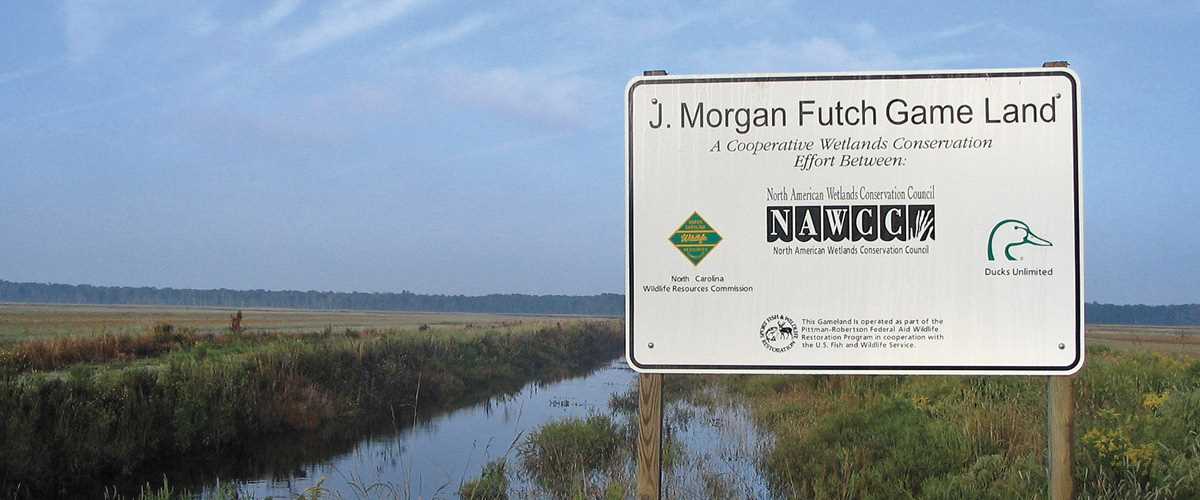The North American Waterfowl Management Plan and migratory bird joint ventures have revolutionized waterfowl conservation

By Craig R. LeSchack
Waterfowl have long been at the forefront of wildlife conservation in North America, dating back to landmark legislation such as the Migratory Bird Treaty Act of 1918 and the Migratory Bird Hunting and Conservation Stamp Act (better known as the Duck Stamp Act) of 1934. A half century later, the North American Waterfowl Management Plan (NAWMP) would prove to be just as revolutionary from a waterfowl population and habitat management perspective. Born out of the precipitous duck decline of the mid-1980s, NAWMP was an incredibly innovative and far-reaching endeavor. Ducks Unlimited was an active participant in NAWMP from the start, providing scientific expertise and experience in implementing on-the-ground waterfowl habitat conservation.
The plan's architects recognized that in order to positively impact migratory waterfowl populations, managers needed to take care of the birds throughout their life cycle. Consequently, population and habitat objectives were developed on a continental scale, from Canada to the United States and down to Mexico. The plan was first signed by the United States and Canada in 1986 and later by Mexico in 1994.
Since NAWMP was developed with a continental focus, an important question was how to implement the goals and objectives of the plan at a local level. Regionally based partnerships called "joint ventures" were formed in waterfowl habitat areas of major concern, such as the Prairie Pothole Region, Lower Mississippi Valley, and Atlantic Coast. These habitat-based partnerships were composed of federal, state, provincial, tribal, and nongovernmental conservation organizations; local governments; businesses; and private citizens. This was truly a groundbreaking model for wildlife conservation and one that continues to thrive and grow today.
With NAWMP in place and joint ventures established to implement habitat conservation objectives, all that was needed was the money to put the plan into action. While the federal duck stamp program provided funds for the acquisition of important wetlands, its main focus was adding land to the National Wildlife Refuge System. Clearly, a new source of federal funding was needed to help implement the plan's habitat conservation objectives. Congress responded by passing the North American Wetlands Conservation Act (NAWCA), which was signed into law by President George H.W. Bush in 1989.
NAWCA provides challenge grants for wetlands conservation projects in the United States, Canada, and Mexico. Every dollar of federal money allotted to NAWCA must be matched by a dollar or more from nonfederal sources such as Ducks Unlimited or state fish and wildlife agencies. Because this program is so effective, funds are often doubled or tripled at the local level.
DU has been incredibly successful in leveraging the philanthropic funds it raises with this key source of public revenue. NAWCA is an especially important funding mechanism for DU's efforts to conserve vital waterfowl breeding habitats in Canada. Well before NAWCA was passed, DU and state agencies were already working together to fund habitat conservation north of the border. However, the impetus to broaden state support came with the signing of NAWMP and the passage of NAWCA. To help provide nonfederal matching funds required by NAWCA, the Association of Fish and Wildlife Agencies (AFWA) established the State Contributions to Canada Program to raise funds from state agencies to support habitat projects in Canada. DU Inc. and DU Canada match every dollar contributed by state agencies and then work to match those dollars with NAWCA and additional Canadian partner funds. In 2016 alone, 37 states contributed more than $3 million for Canadian waterfowl habitat conservation projects.
The results of this international partnership have been nothing short of remarkable. Over the past 52 years, state agencies have contributed more than $85 million, which has been leveraged with funds from DU, NAWCA, and other sources for a total investment of $340 million. To date, more than 6.5 million acres of vital waterfowl habitat have been conserved by DU and its partners across Canada.
More than 30 years have passed since NAWMP was launched, and the plan has been updated several times and received a major revision in 2012. The plan's joint ventures have increased in number and expanded in scope to help conserve other species of birds and their habitats. On the revenue side, the federal duck stamp program, NAWCA, and AFWA's State Contributions to Canada Program have also seen changes, but they continue to play a vital role in funding waterfowl habitat conservation across this continent. And through it all, Ducks Unlimited has remained at the forefront of this dynamic conservation movement—and will continue to do so in the future—to ensure that we will have waterfowl populations sufficient to fill the skies today, tomorrow, and forever.
Craig LeSchack is director of conservation programs in DU's Southern Region.